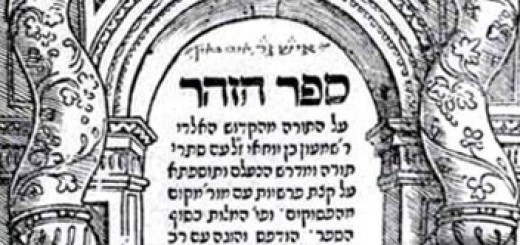By Leibel Estrin
In Devorim (5:10), the Torah commands us to “Learn them and safeguard them so that you will be able to do them.” Without learning, it’s impossible to know what to do.
Therefore, our sages have said that we should learn in the morning and in the evening. The morning usually means right after prayer, as the Code of Jewish Law (27:1), states “After prayer, a person should establish a fixed time for Torah study. This session should be established and not skipped[1]….”
The mitzvah of learning Torah applies to every person, rich or poor, young or old. If you cannot study because you lack the knowledge or materials, you should help others who can study by donating to a yeshiva, purchasing books for them, etc.
In Chapter II, we mentioned that there are five levels of Torah, the Pshat, “the simple meaning,” Remez, “allusion”, Drush, “homilies”, Sod, “secrets of Torah,” and Chassidus, “path to serving G-d.” Each level teaches us about living our lives in the holiest manner possible. Ideally, these levels form the steps of a ladder. A person should first learn the meaning of important texts and how we fulfill that meaning by following the laws.
For example, one of the 10 commandments is “Honor your father and mother.” The Torah teaches us how to fulfill it. In the Shulchan Aruch (Code of Jewish Law), we learn that we honour parents by fulfilling their wishes (as long as those wishes don’t contradict the Torah), by not standing in their place or sitting in their seat, by speaking to them with respect, by providing them with their needs, etc. If we look in the Talmud, we can learn just how far we should go to fulfill the mitzvah. For example, the Jerusalem Talmud (Peah 1) records the story of Dama ben Nethina, a non-Jew who lived in Ashkelon. He owned precious gems that could be used to decorate the coat of the Cohain Gadol (High Priest). The sages traveled from Jerusalem to Ashkelon and offered Dama 600 thousand golden dinars to sell the jewels but he refused. Dama kept the jewels in a safe. However, the key to the box was under his father’s pillow, and at the time, his father was sleeping. Dama turned down 600,000 golden dinars rather than disturb his father. The sages bought the jewels from another source. However, G-d rewarded Dama for his act. A red heifer was born in his herd. Once again, the sages approached him. This time, Dama replied, “I know that you are prepared to pay any amount for the red heifer. However, I only want the amount that I lost when my father was asleep.” He obviously received it.
Learning Torah has many other benefits besides helping us understand our religious obligations. The Torah represents Wisdom that is totally united with the Essence of G-d. When we learn Torah, we completely merge with the Creator. It’s a type of unity that no other mitzvah can provide. That is why our sages said, Talmud Torah kneged kulam. Studying Torah is equal to all the mitzvos.
There’s another advantage to studying Torah (the Wisdom of G-d): it leads to performing mitzvos that represent the Will of G-d. For example, it is G-d’s will that we honor our parents or give charity. Learning Torah naturally leads to and enhances the way we perform mitzvos. Since learning Torah is also mitzvah, it connects us to both the Wisdom and Will of the Creator at the same time.
As a way to fulfill this Mitzvah, the Lubavitcher Rebbe, Rabbi M.M. Schneerson, has encouraged everyone to purchase Jewish books. Having Jewish holy books demonstrates that Jewish values are important. At the same time, their presence reminds us to use them. The more books the better. However at a minimum, we should have a Chumash (Five Books of Moses), a Book of Psalms, and a siddur (Prayer Book).
On a deeper level, our sages have taught that the world stands on three things: on the study of Torah, on the service of G-d, and on charity. Our forefathers, Abraham, Isaac, and Jacob represent these three pillars. The Mishna relates that the forefathers were mentioned daily in the Holy Temple to provide a measure of spiritual strength and aid in the service of G-d. Every morning, the Temple official would say, “Go out and see if the time has come to perform the morning sacrifice.” If it had arrived, the lookout replied, “The whole of the east is lit up.” Those below would ask, “Up to Hebron?” and he would reply, “Yes.”
The commentators on the Mishna explain that the officials in the Holy Temple mentioned Hebron every morning to invoke the merits of Abraham, Isaac, and Jacob, who are all buried in Hebron. Similarly, having a Chumash (Five Books of Moses), book of Psalms, and siddur, recalls the merit of our forefathers, and the three pillars on which the world stands. For example, the book of Psalms (as well as a charity box) represents Abraham who served G-d through charity to men. A siddur represents Isaac who excelled in Prayer and a Chumash represent Jacob who established the tents of Torah.
Yet there is another mitzvah associated with the Torah. According to Maimonides, there is a mitzvah to write a Torah. As you may know, a Torah is hand-written on parchment by a specially trained scribe. It contains 304,805 letters. If just one letter is not written properly, the entire Torah is not kosher. To fulfill the mitzvah of writing a Torah, it is the custom to purchase a letter in a Torah. Interestingly, the merit of buying a letter in a Torah is alluded to in the book of Daniel:
“There shall be a time of trouble such as there never was since there was a nation until that time. And that time your people shall be delivered, everyone who shall be found written in the book.” (Daniel, 12:1)
Your local Orthodox Rabbi can help you perform this mitzvah.
An excerpt from the book “Judaism From Above The Clouds.”
Leibel Estrin has been writing about Jewish topics for four decades. He is working as a Jewish chaplain for the Aleph Institute. Leibel has recently published a work on Jewish perspectives and values entitled “Judaism From Above The Clouds.” To read more of Leibel’s writings and to purchase his book click here.
[1] Ganzfried, Rabbi Shlomo, Kitzur Shulchon Oruch, translated by Rabbi E. Touger, Moznaim Publishing Corp., NY, NY, 1991, p. 124






















